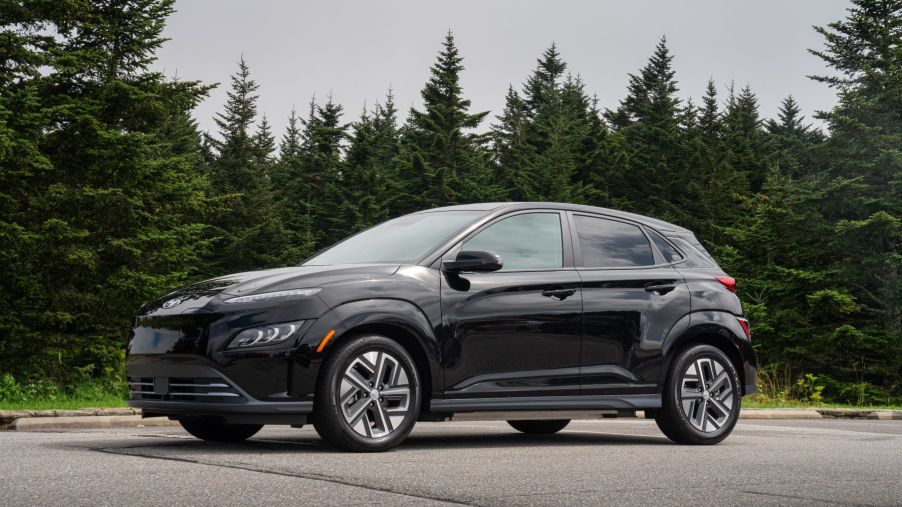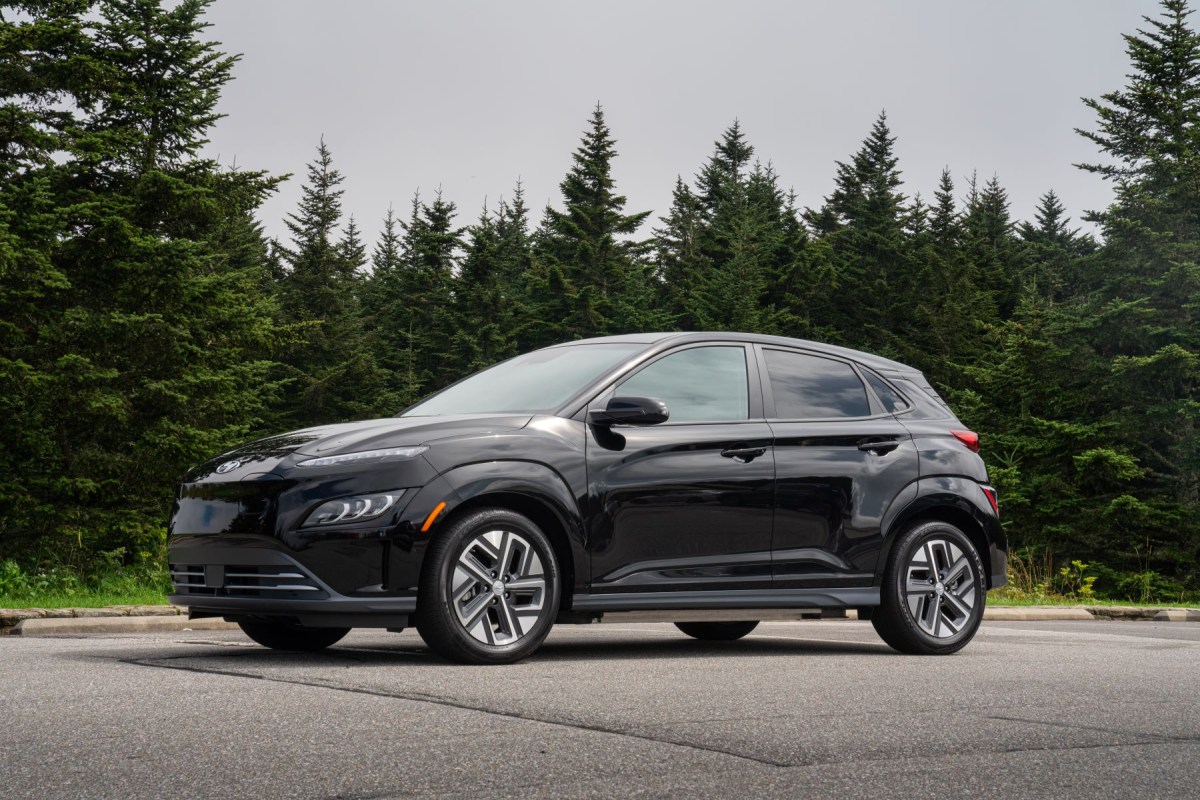
4 Nissan Leaf Alternatives That Aren’t a Chevy Bolt EV
The Nissan Leaf is one of the most popular affordable EVs, but it’s not without problems. Its base engine struggles when pushed to higher speeds, and the interior isn’t high-quality. In addition, the standard battery provides only 149 miles of range, while rivals like the Chevy Bolt EV can go 259 miles. Though the Chevy Bolt is a solid Nissan Leaf alternative, it’s not the only option. Whether you can’t get a Bolt due to availability issues or are just not a fan, here are four other compact EVs to consider.
1. Hyundai Kona Electric

With 258 miles of range, the Kona Electric is as efficient as the Bolt, Hyundai claims. Chevrolet also shows that the Bolt EV has a fuel economy rating of 120 MPGe combined. Per Nissan, that’s close to the base Leaf’s 123 MPGe.
Producing 201 hp and 291 lb-ft of torque, the Hyundai Kona EV also has more standard power than the Nissan Leaf. However, Edmunds shows that the Leaf offers an upgraded motor setup making 214 hp and 250 lb-ft of torque.
That’s still less twist than the Hyundai Kona EV, and the Leaf is more expensive at $36,040. All Kona Electric models have identical range estimates and powertrains, starting at $33,550.
Like the Chevy Bolt EV, the Hyundai Kona Electric has wireless smartphone integration and a decent number of advanced driver-assistant systems (ADAS). According to Edmunds, the Bolt EV also has better basic and drivetrain warranties than the Nissan Leaf. The powertrain warranty lasts 100,000 miles or 10 years, whichever comes first.
2. Kia Niro EV
Kia says the Niro EV makes 201 hp and 188 lb-ft of torque and offers slightly less range than the Bolt at 253 miles. It’s also less efficient overall, rated for 113 MPGe city/highway combined. The upgraded Nissan Leaf SV Plus is rated for 121 MPGe combined, but it gets only 212 miles of range.
The Kia Niro EV also provides adequate room for passengers and more cargo space than the Chevy Bolt. The latter has more than 16 cubic feet of cargo space with each seat in use — and no frunk.
On the other hand, the Niro EV has a frunk and almost 23 cubic feet of storage space behind the second row. It also has more maximum cargo space than the Nissan Leaf (approximately 63.7 cubic feet versus 30 cubic feet).
3. Mini Cooper Electric
The Mini Cooper Electric produces 181 hp and 119 lb-ft of torque. Though that’s more horsepower than the Nissan Leaf S, this small crossover falls behind rivals in terms of range. It can go only 114 miles on a full charge.
The Mini Cooper Electric seats four passengers, while the Chevy Bolt and Nissan Leaf can accommodate five. Its cargo capacity is much lower than the Chevy Bolt’s, and there’s not much stretch-out space behind the front seats. However, the Cooper Electric’s interior looks snazzier and has better materials than the Leaf’s cabin.
4. Fiat 500e
Though the Fiat 500e isn’t available for purchase yet, Stellantis confirms it will sell this EV in the United States. It produces only 117 hp, but the European model has a reported range of 199 miles. Car and Driver predicts the EPA will assign the Fiat 500e a range of 160 miles.
C/D also thinks the 500e might be more expensive than a Nissan Leaf SV Plus, at $40,000 to start. And thanks to its limited backseat space, the Fiat 500e is better suited for single riders or smaller families. However, Stellantis promises upgraded interior materials like natural wood and sustainably sourced leather.


